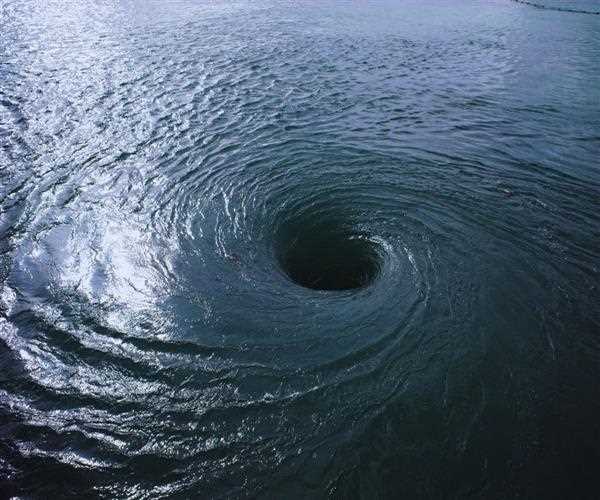Search here

01-Apr-2024 , Updated on 4/3/2024 3:52:02 AM
Indian Ocean has giant gravity hole, what is it and why it formed?
The Indian Ocean has a mystery that has kept geologists busy for years; a huge '
gravity hole' whose gravitational effect is very different from the rest of the Earth. This abnormality brings into existence a depression in the ocean depth, and the water drops over 328 feet lower than the level of the surrounding water. Forming so impossibly long and deep, what constitutes a gravity hole and why was it born? Shall we start talking about the biology this amazing natural phenomenon is founded upon?
Understanding the Gravity Hole
The term ‘gravity hole’ probably makes you imagine a big hole in the ocean, but the literal meaning itself is more abstract. This occurrence, at times known as the Indian Ocean geodetic low which is the
gravity pull which is one step below the average gravity, is the lower gravity pull area of the world. Being weaker on the moon, the gravity of the gravitational pull causes the depression of the ocean's surface, resulting in a circular constituency, which is estimated to cover at least 1.2 million square miles, with the area near southern India as the starting point.
The concept of geoid is essential to understand the following phenomenon. A height equivalent surface, known as a geoid, is a conceptual model of a perfect sea level, theoretically influenced by gravity and the turning of the Earth only, and lacking the effect of wind or tidal forces. In regions of the universe, where the gravitational force is stronger, the geoid tilts, and this gravity hole appears to be based on
gravitational perception.
The Roots of the Phenomena
The Indian Ocean’s central feature, the gravity hole, was a mystery until hard facts filled the gap. By utilizing supercomputers of world-class standards, the scientists' computer model reproduced 140 million years of the geological history of the area. The gravity abyss, so-called, was caused by plumes of magma not any different from the processes that form volcanoes, geologists revealed.
Magma plumes, arising from the Earth's mantle, have the potential to influence the density of mass as well as the overall distribution of mass both within the crust as well as the mantle. The rotation of the Moon due to the revolving of the Earth, in turn, changes the local gravitational field in the Indian Ocean and this makes it appear like a slight dip on the earth's surface. The study suggests that such a gap was due to the ocean's disappearing. Then it happened with the moving of India's landmass and it's finally ashed-how it hit Asia. That is how the gravity hole was formed.
Historical Discovery and Research
Discovery of a gravitational anomaly of extreme nature and great scale was initially made by a Dutch geophysicist, Felix Andries Vening Meinesz, in 1948. In the meantime, its nature is deeply rooted in recent technologies and mathematical models describing the rotational motions of the Earth. The study surely has many critics, but still represents a good step in the right direction to resolving one of the Earth's gravitational strangest mysteries.
Critiques of the study center on the modeling problems and no corresponding ones between the predicted and observed geoids. As of now, results are obtained to some extent and idealization occurred in this process. On the other hand, the researchers continue to trust their model while admitting that though the gaps in the simulations are inevitable and flawed, the proposed model remains a viable explanation for the gravity hole being a reality.
The Future of the Gravity Hole
The Indian Ocean sag structure of geoid low went back approximately 20 million years ago. However, its future is quite unpredictable. It can continue to exist indefinitely or even be eliminated in case the gravity anomaly is influenced by the mass movements of the Earth. This uncertainty is interconnected with the exploration of geophysics studies that provide additional amenities and illustrate the interactive features of our planet.
Why It Matters
The Indian Ocean's breed-a-hole phenomenon being understood should be a why because it has many significance. At first, it expands our mind over the Earth's physical processes and cardinal elements affecting the gravity field. Among its other best-known importance is the effect on practical utilities such as navigation and sea level measurements which largely weigh on the accuracy of the terrestrial gravity.
Conclusion
The mysterious gigantic 'gravity hole' in the Indian Ocean is one of the world's wonders which shows mysterious characteristics of the uneven gravitational field of the planet. As stagy as the phenomenon could look, several technological advances and geophysical models are increasingly contributing to unraveling its involving causes. The more we comprehend the nature of the inner world of Earth; the more we will be able to appreciate the dynamism and the perpetual change in our planet. Not only is it the topic of the study of gravity holes interesting in and of itself a specific geophysical phenomenon but it also fills in the gaps in our general knowledge about Earth´s geologic past and the forces that create our world.

Student
An MBA in finance imparts and improves management aptitude, inventive ability, critical thinking ability, and so forth. It offers a real-time experience that fabricates a staunch career foundation for students and working professionals. It helps them to thoroughly understand the financial sector.
Comments
Join Our Newsletter
Subscribe to our newsletter to receive emails about new views posts, releases and updates.
Copyright 2010 - 2025 MindStick Software Pvt. Ltd. All Rights Reserved Privacy Policy | Terms & Conditions | Cookie Policy